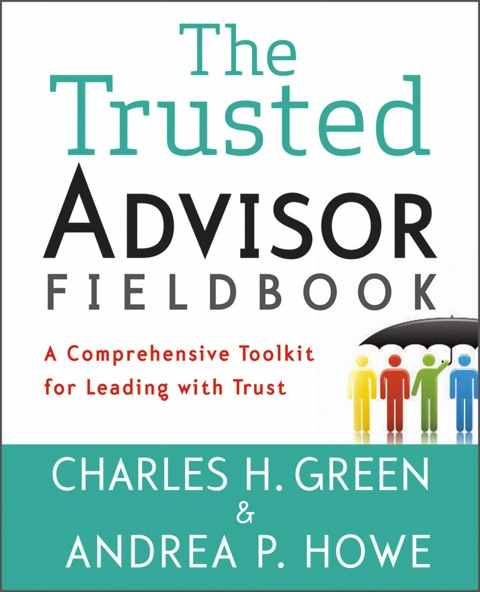Rich Sternhell was a Managing Principal at Towers Perrin, now Towers Watson, until his retirement last year. He was a Towers Perrin Board member, and chaired Board committees including client relationships, technology and quality; he not only consulted, he managed. He ‘sat in many chairs,’ as he puts it.
His career, post-MBA, covered four decades that saw radical shifts in employee compensation, consulting, and the role of management. Now free to indulge the thoughtful side of what he has seen, he agreed to share some insights with us.

CHG: Rich, thank you for sharing your thoughts with the Trust Matters audience. You’ve got some big-picture perspectives for us, so let’s dive right in. You started work post-MBA at New York Life in 1970. What are the biggest changes in business you’ve seen since then?
RS: Almost all the changes in business can be related to technology and the resultant increase in what I’ll call the velocity of business. Perspectives are shorter. What is often seen as “quarter to quarter” management, I would describe as management of metrics, rather than of the business. Whether it’s stock price, market cap, EBITDA or cash flow, the focus on metrics that are market-visible has monopolized management attention. We have moved from management that is passionate about products to management that is passionate about the numbers they report.
The focus on acquisitions, divestitures, etc., that can increase price multiples has created a loss of shared understanding between employees and management as to the source of value for the organization. This has also created a generation of management that is focused on management of their careers rather than their companies.
There is also a loss of organizational connectedness. Fellows in their 50’s and 60’s who would take the time to coach a young newcomer. They told stories about the past and made people who were long gone part of that newcomer’s memory bank and connection to the organization. I see very little of that today.
That newcomer is planning career moves through moving around rather than moving up. The few old-timers left have lost interest in mentoring young’uns who will be moving on to more fertile fields.
CHG: Let’s take that first one, management by career, not company. Say a little more about that?
RS:Those who have made it to the C Suite often have spent their energies making sure their resume gets them there. It becomes hard to change perspective to become passionate about a business you didn’t grow up in, have limited long-term relationships within and compensation highly leveraged to stock performance that has the potential of creating generational wealth.
CHG: Let me be devil’s advocate a bit here; isn’t it also a good thing that we’ve developed an ethos of mobile, project-oriented work, that fits very well with a fluid, collaborative kind of organization of work for the future?
RS: A mobile workforce is absolutely essential in an economy as technology driven as ours is. At the same time, company cultures have become fragile. But the bond that existed between management and the workforce doesn’t have the strength of shared experiences over long periods of time.
My favorite set of questions on employee engagement surveys has to do with leadership. There are always questions like, “Does leadership care about the associates?” “Does company leadership act in the long-term best interest of the organization?” Inevitably, scores on these questions come in significantly lower than questions that relate to the individual employee’s location or sphere of responsibility.
Managements fret about these results a great deal but then take comfort in the normative data that says that other companies score equally poorly. Almost inevitably a corporate communications campaign begins with messages from leadership about how much they really care.
I think these campaigns are self-defeating. Employees want to know that the management they see has “signed on” and take ownership of the messages. The direct communication from senior leadership has allowed middle management to abdicate their role in communication. When middle managers snicker at senior management messages the result is worse than if no communication had been made at all.
CHG: Many Trust Matters readers have little perspective on another major shift you’ve seen—the decline of the defined benefit plan. It can sound awfully arcane, but I’ve heard you say it was one of the tragedies of our time. Explain?
 RS: The defined benefit plan was a bet by the workforce and a commitment by the company to the long-term health of the business. It was an obligation taken on by company ownership in return for the loyalty of the workforce. It provided a degree of security to employees at all levels that allowed them to think about the long term.
RS: The defined benefit plan was a bet by the workforce and a commitment by the company to the long-term health of the business. It was an obligation taken on by company ownership in return for the loyalty of the workforce. It provided a degree of security to employees at all levels that allowed them to think about the long term.
While our culture places a high value on individual responsibility we are asking employees to make decisions on matters for which they are woefully unprepared. The 401k has been sold as a replacement for pensions while it is clear that the numbers simply don’t work that way. In my early days as a pension consultant we talked about defined benefit plans as a company tool that enabled employees to be retired from a company with the security that they wouldn’t embarrass the company they worked for by being out on the street.
Companies no longer feel that embarrassment, and employees have been led to believe that somehow the DC plan will provide for their retirement. It can’t provide the same level of income replacement. Management looks to stock options to fund their retirement…employees don’t have the same opportunity.
Employees don’t trust the security of their job, their health insurance or even social security. In the absence of tools to manage for the long-term they act for the short term. It has become all about self-preservation.
CHG: Given those perspectives, what do you have to say about trust as it has evolved in business? Let’s start with headlines: what do the Goldman and BP headlines have to tell us about trust?
RS: Trust in business has many different components, all of which link to each other. There is trust between co-workers, trust between employee and supervisors, trust between salesman and customer, trust between salesman and production. BP is a great example of the disconnect that can grow.
Let’s start from the premise that for a business to survive and thrive it must create value for customers, and a return for its investors. It also must function within the framework of legitimacy established by societal norms. To the extent it enhances the communities within which it operates, goodwill is created which can be turned to competitive advantage.
On the other hand, damage to the community results in a destruction of the trust essential to maintaining not only a customer base, but the relationship with all the constituencies on which a business depends. This isn’t just a business case issue, justified internally by the needs of the business–it is about the underlying linkage of communities in a free market society.
Trust is fundamental to the achievement of all business objectives and its absence is the greatest threat to our business community as well as our broader society. Unfortunately, there are strong forces at work that have the effect of weakening our society’s trust in our business community and its leaders.
The village blacksmith was well aware that each implement he fashioned was critical to future orders. The quality and timeliness of his product determined his position in the community. To the extent he failed to meet his customers’ expectations, he created the opportunity for competition. To the extent he failed to manage his costs, his family starved. He didn’t manage his business for quarterly results, but for the well-being of his family, i.e., “long term selfish”. The community he served also knew that their well-being depended on his success.
Common approaches to this problem are often mistaken. Accountants tend to quantify risk, giving equal weighting to probability and severity providing a reasonable estimate of quarter to quarter financial impact. Actuaries, on the other hand, give significantly greater weight to severity, recognizing the long term economic impact of the high-severity risk. Not surprisingly, the accounting perspective has gained precedence in recent years.
The re-establishment of trust among all stakeholders at every level is central to rebuilding business legitimacy. The risk of breaking trust, whether through cutting costs on deep water drilling platforms or breaking faith with customers, needs to be seen as a fundamental attack on business legitimacy, not just a cost-benefit analytic.
It’s been said that for an organization to claim a value, it must be non-negotiable….without exceptions. What does this look like? Examples include:
· A firmwide commitment to operate on principles rather than incentives
· A commitment to honor values over strategies, even successful ones
· An instinct to forgive the mistake….but to terminate for the cover-up
· A culture that commitments are sacred, whether to a colleague or a client
· A shared understanding that the long-term success of the organization must override the short-term benefit to an individual or unit
Building a trust-based organization from the bottom up and the top down is a serious commitment, but well worth the investment.
 CHG: How about trust between employer and employee?
CHG: How about trust between employer and employee?
RS: John Bogle, the founder of Vanguard, has spoken often about the shift from ownership capitalism to management capitalism. My sense is that an employee’s understanding of the interest of a business owner was intuitive. The employee may not have liked the owner but intuitively he/she knew that they had an interest in the preservation of the business.
This is not true about the employee’s relationship to management, particularly when they see a revolving door in the C Suite of people from other businesses and industries who do not share the same long-term interest in the organization’s well-being. The increasing gap in pay between senior management and the average employee has exacerbated that gap in trust.
CHG: You’ve told me before you take a somewhat dark, pessimistic view of people, but it often comes out pretty optimistic. What is it that you think motivates people in business, and what does that mean for management?
RS:I truly believe most people want to find fulfillment in their work. In today’s world, concern about security—job, health, wealth–is an enormous distraction to engagement. It is an enormous challenge for management to overcome and often creates an internal conflict for the employee. Should I take the risk of doing “the right thing” or should I “keep my head down”? The more clearly management articulates “the employment deal”, the greater the opportunity for increased engagement and the creation of long-term value. I have seen values based management at work and have little doubt that there are organizations out there making it work today.
CHG: What does that suggest for management-by-numbers?
RS: The numbers are critical. Management won’t stay in place very long if they can’t deliver results. But management only by the numbers isn’t enough. Values will trump strategy over time.
The real challenge is the friction cost that loss of trust has on a business, our economy and our society. Loss of trust means an increase in a myriad of costs through due diligence requirements, procurement processes, government regulation and litigation. Sales take longer to close. Contracts take longer to negotiate. The legal aspects of operating a business have exploded.
None of these areas have anything to do with increased value of the product or service a business produces but the costs imposed are a direct result of decreased trust. Thus we have an ever-increasing number of workers who don’t contribute to creating value, but are essential elements in today’s business environment.
CHG: What can an individual TrustMatters reader do to enhance his or her ability to trust, their personal trustworthiness, or the level of trust in the business world of today?
RS: The need and desire for trust is universal. The challenge comes when we believe that it is important to act in a trustworthy manner in some situations and not in others. Understanding our interdependence with vendors, customers, employees and other stakeholders is essential. To the extent we employ situational ethics and call a violation of trust a business judgment we weaken the trust framework of an organization. Each individual has the capacity to ask themselves the critical question in every business judgment they make as to whether they are acting in a principled manner.
CHG: What do you think of the MBA Oath movement that began last year?
RS: It is certainly a worthy aspiration…much like any approach to ethical behavior. It is discouraging that such an oath would be perceived as necessary. The implication of the MBA Oath movement is that there is some degree of career sacrifice entailed with living up to the oath. That in itself is demeaning to business people.
CHG: What’s the best business book you ever read? The best advice you ever got? And what’s the one thing you’d recommend to a new MBA today?
RS: I can’t give you just one Charlie, but I’d put your book Trusted Advisor up with the best. It is the first book I recommend to anyone entering sales, consulting or professional services. My daughter is a doctor and my son an attorney. I have made sure that both of them have copies and have read it.
Another is by your co-author, David Maister. David’s writing has been formative in my thinking as a consultant and manager for almost 30 years. I’d pick True Professionalism as my favorite. A recent read has been General Eisenhower’s Report on Operation Torch. I only wish I had read it 30 years ago. Anyone who has to manage a merger or a large project with a multidisciplinary team should be required to read it.
Finally, a new book by a professor at Columbia, Sheena Iyengar, The Art of Choosing. The Art of Choosing is a fascinating book from a pure marketing perspective, but even more interesting as probably the most helpful thing I’ve ever read in understanding cultural differences.
For the new MBA I would say that business is an honorable profession as long as you practice it honorably. Every decision is a choice and knowing that the choices you make have earned you the trust of your colleagues and your clients is the greatest reward you can hope to receive.
CHG: I’m blushing, but I know you’re serious, so I’ll leave it in. And many thanks to you for spending time and sharing wisdom with us, we greatly appreciate it.
——–
This is number 13 in the Trust Quotes series.
The entire series can be found in our Trust Quotes section on TrustedAdvisor.com
Recent posts in this series include:
 In case you hadn’t noticed, we’re now in heavy book promotion mode. The Trusted Advisor Fieldbook has recently published and we want the world to know about it.
In case you hadn’t noticed, we’re now in heavy book promotion mode. The Trusted Advisor Fieldbook has recently published and we want the world to know about it.
 I seldom get to deal in up-beat stories. At the heart of my practice in financial litigation and disputes lie the predations of the white-collar malefactors, abusing their roles of public and private trust in ways of questionable legality and dubious ethics and morals.
I seldom get to deal in up-beat stories. At the heart of my practice in financial litigation and disputes lie the predations of the white-collar malefactors, abusing their roles of public and private trust in ways of questionable legality and dubious ethics and morals. In the airport recently, coming home from New Mexico, I just picked up John Kotter and Lorne A. Whitehead’s new little book,
In the airport recently, coming home from New Mexico, I just picked up John Kotter and Lorne A. Whitehead’s new little book,  Respect is a theme I run across in my work with trust. Many people say they want to be trusted. Yet they feel disrespected by those from whom they seek trust. In such cases, “they don’t trust me” quickly breaks down into “they behave disrespectfully toward me.” A desire morphs into a resentment.
Respect is a theme I run across in my work with trust. Many people say they want to be trusted. Yet they feel disrespected by those from whom they seek trust. In such cases, “they don’t trust me” quickly breaks down into “they behave disrespectfully toward me.” A desire morphs into a resentment.  With all the trust surveys proliferating out there, I’m sure one of them includes questions that rhyme with “do you trust leadership of __?” And if so, I’m pretty sure the numbers have declined over recent years.
With all the trust surveys proliferating out there, I’m sure one of them includes questions that rhyme with “do you trust leadership of __?” And if so, I’m pretty sure the numbers have declined over recent years. There are lots of ways to build trust with others (
There are lots of ways to build trust with others ( RS: The defined benefit plan was a bet by the workforce and a commitment by the company to the long-term health of the business. It was an obligation taken on by company ownership in return for the loyalty of the workforce. It provided a degree of security to employees at all levels that allowed them to think about the long term.
RS: The defined benefit plan was a bet by the workforce and a commitment by the company to the long-term health of the business. It was an obligation taken on by company ownership in return for the loyalty of the workforce. It provided a degree of security to employees at all levels that allowed them to think about the long term. CHG: How about trust between employer and employee?
CHG: How about trust between employer and employee? In each pair, guess which city has the higher violent crime rate?
In each pair, guess which city has the higher violent crime rate?